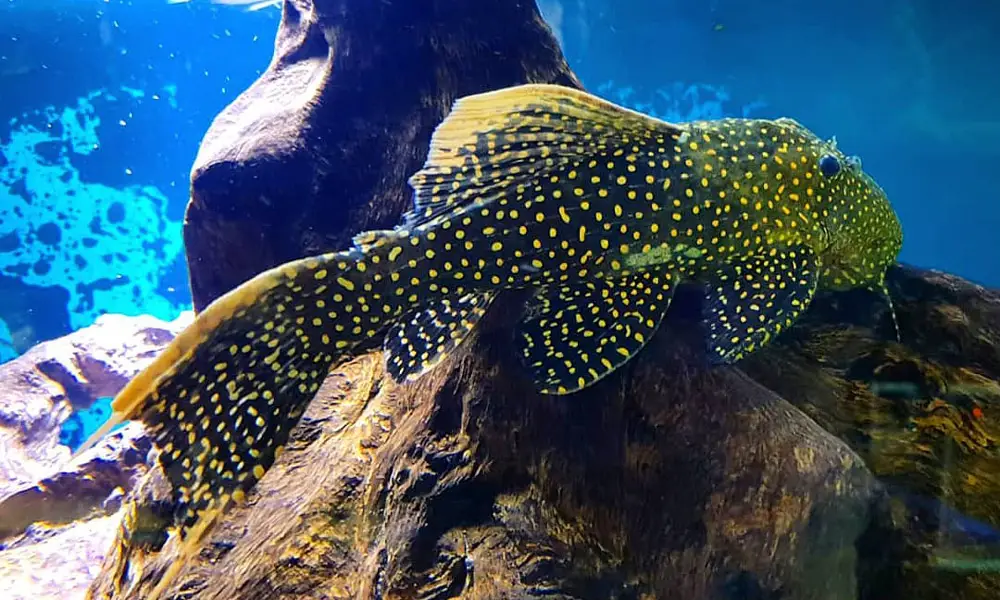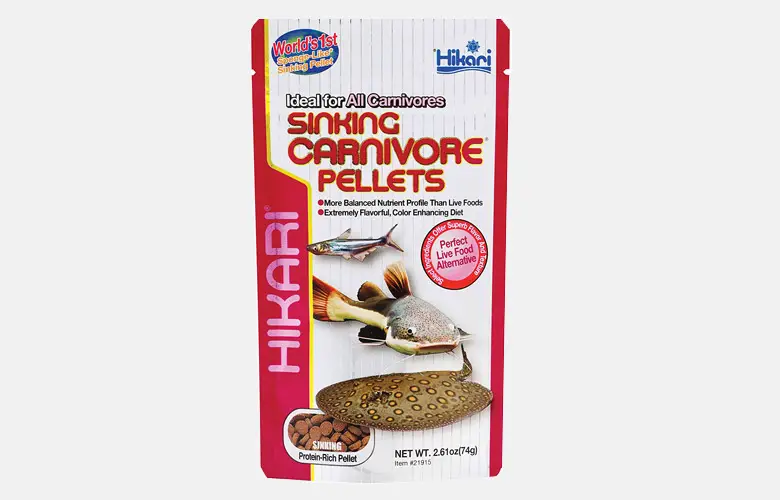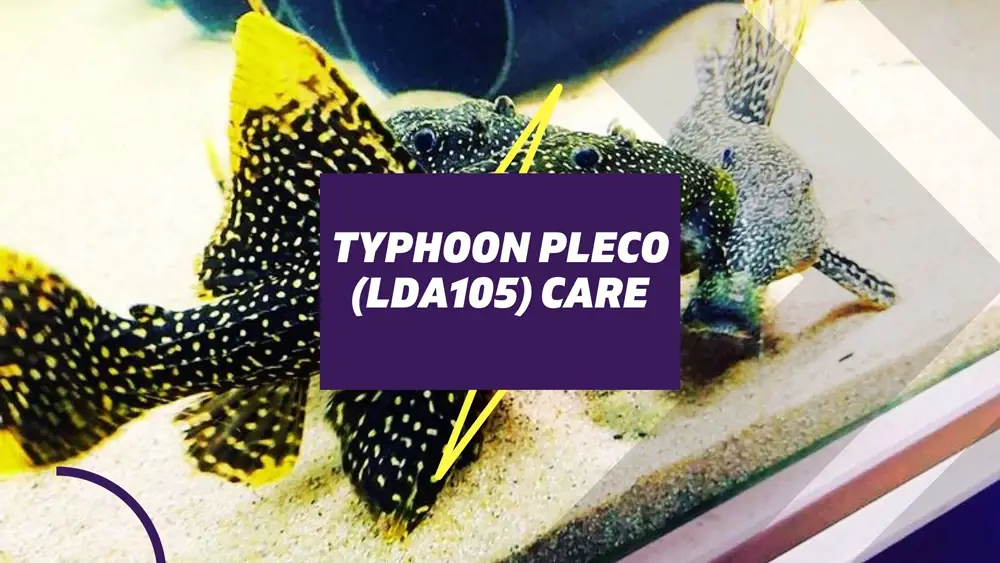The Typhoon Pleco (Pseudacanthicus sp. LDA105) is one of the most sought-after and expensive cactus plecos on the market. Like other members in the genus Pseudacanthicus, the Typhoon Pleco is extremely colorful that will draw attention in any home aquarium.
Although these fish have been around for over a decade in the aquarium community, they are still the hardest-to-obtain fish since they’re not allowed for export from Brazil, and they have a reputation for being hard to breed.
If you’re lucky enough to get your hands on one of these fish, you’ll be rewarded with a beautiful and unique addition to your aquarium. Below, you’ll learn everything you need to know about Typhoon Pleco care.
Species Information

The typhoon pleco (Pseudacanthicus sp), is also known as Fire Spot Cactus Pleco or LDA105 in the German magazine “Das Aquarium” LDA system, a member of the Pseudacanthicus genus, which contains some of the most colorful and beautiful freshwater fish in the world.
There are more than 35 different species of cactus plecos. Only eight have been described.
- Pseudacanthicus fordii (Günther, 1868)
- Pseudacanthicus histrix (Valenciennes, 1840)
- Pseudacanthicus leopardus (Fowler, 1914)
- Pseudacanthicus major (Chamon & Costa e Silva, 2018)
- Pseudacanthicus pirarara (Chamon & L. M. de Sousa, 2016)
- Pseudacanthicus pitanga (Chamon, 2015)
- Pseudacanthicus serratus (Valenciennes, 1840)
- Pseudacanthicus spinosus (Castelnau, 1855)
These fish are found in the fast-flowing big rivers of Brazil, specifically in the Rio Jamanxim and Rio Tocantins, where they live among submerged tree stumps and branches.
Appearance

The Typhoon Pleco has an elongated body that has a base color of dark brown or black. The body is covered with small, white, or golden spots. The contrast between the specks and baby color will vary slightly, depending on the specimen.
Unlike the Gold Nugget Pleco, you will find their dorsal and caudal fins are accented with white or yellow dots. These areas are red to faded orange.
The spikes are present in all typhoon plecos. The males are slimmer and have more prominent odontoid growth on their dorsal fin and pectoral fins, and they also have broader heads.
Typhoon Pleco Size
Typhoon Plecos can grow up to 16 inches (40 cm) when it comes to size. These are very large fish!
How big do typhoon plecos get can be influenced by a number of factors. The genetics and the level of care you provide are the main contributors.
Typhoon Pleco Lifespan
Like its close relative, the Leopard cactus pleco (Pseudacanthicus leopardus), Typhoon Plecos have an expected lifespan of up to 12 years with proper care. This is one of the best parts about owning a Typhoon Pleco because you will have a long time to enjoy their company.
However, like all fish, the lifespan of Typhoon pleco can vary depending on several factors. A shortened lifespan is usually due to bad water conditions, poor quality food, or stress from tank mates.
Care and Tank Setup
Typhoon plecos are generally peaceful but become territorial and aggressive as they mature. Proper care is a challenge for beginners fish keepers.
Tank Size
Since these fish can grow up to 16 inches, you will need a tank that can accommodate their size. Additionally, Typhoon Plecos are natural territorial fish that needs more personal space to feel comfortable.
A tank size of 55 gallons or larger is recommended for a single Typhoon Pleco. If you want to keep them in a small group without territory issues., you need at least a 150-gallon tank.
It’s always a good idea to go larger when it comes to aquariums. A bigger tank is easier to maintain and gives the fish more room to swim and play.
Water Conditions
As we mentioned above, typhoon plecos are native to the warm and fast-flowing rivers in South America. They prefer warmer temperatures to thrive.
They are reasonably hardy fish and can tolerate a wide range of environments. But, it’s best to keep them in water with stable water parameters.
When setting up your fish’s new home, you want to keep in mind a few basic parameters.
- Water temperature: 27° to 32°C
- pH level: 5.0-7.0
- Water hardness: 4 – 13
Filter and Heater
Typhoon Plecos come from rivers with high currents, and you will need to replicate this in their home aquarium. These fish are also waste producers. A strong filter and a good size heater are must to keep the water quality stable.
It’s recommended to use a high-quality canister filter when keeping typhoon plecos. The filter will help keep the water clean and help circulate the water in the tank. We recommend the Fluval FX6 for larger tanks or the Eheim Classic External Filter 2217 for smaller tanks.
Substrate and Decor
Like most plecos, these fish are bottom-dwellers. You can use a gravel substrate at the bottom, but they prefer a softer sand substrate in their tank as they tend to burrow.
When it comes to decor, typhoon plecos need a lot of hiding places. Plenty of driftwood, caves, and large openings stores can provide some privacy and help make them feel secure.
Typhoon plecos don’t need plants. More specifically, all plecos don’t need plants. Choosing what plants to keep in your aquarium is your personal preference. However, if you have a fish tank without plants, make sure your filter isn’t too weak to produce enough oxygen.
We recommend installing an extra pump or air pump to provide more oxygen in the water.
Typhoon Plecos Tank Mates

Compared to other cactus plecos, the typhoon pleco tends to be quite aggressive and territorial towards those of the same species or similar-looking fish. That means you need to be careful when picking tank mates for your typhoon pleco.
These fish stick to the bottom of the tank. So, lots of the most popular schooling fish that typically swim at the top, middle of the tank can work. But, they will become aggressive when it comes to food time or if they feel their territory is being infringed.
Some potential typhoon pleco tank mates include:
- Oscar Fish
- Green Terror Cichlid (Size | Tank Mates | Female Green Terror)
- Keyhole Cichlid
- Chocolate Cichlid
- Cory Catfish
- Ember tetra
Food & Diet
If you want your typhoon pleco to live as long as possible, you will have to give them a varied diet. This fish is primarily a carnivore but not a predator. They have a few strong and sharp teeth that can be used to crush small snails and crustaceans.
To ensure they are getting all the nutrients they need, feed them a mix of meat-based foods and plant-based foods.
You can give your typhoon pleco the sinking pellets and wafers that are made for bottom-dwelling fish. We recommend the Hikari Sinking Carnivore Pellets.

It would be best to supplement their diet with live or frozen foods a few times a week. Typhoon plecos love eating brine shrimp, bloodworms, krill, blackworms, and tubifex worms.
Behavior & Temperament
Typhoon plecos are relatively peaceful fish that spend most of their time near the bottom of the tank. They are nocturnal and tend to be more active at night. Typhoon plecos are not very social fish and prefer to live alone.
When these fish feel threatened, they will often hide in their cave or behind some driftwood. Typhoon plecos can become to be aggressive and territorial when it comes to their favorite hiding spots.
Typhoon Plecos Breeding
So far, no one has succeeded in breeding typhoon plecos in captivity; there is very little information available on how to breed it.
Availability
These rare beauties are the most hard-to-obtain big catfish in the fish-keeping hobby. All specimens in the aquarium trade are wild-caught and smuggled out of Brazil. Due to their high demand, typhoon plecos are usually very expensive and hard to find.
They are usually only available online. Expect to pay almost thousands of dollars for a typhoon pleco.
Hopefully, the enthusiasts who keep this species can successfully establish a breeding program to help bring down the price in the hobby and make them more widely available in the future.
Closing Thoughts
The typhoon pleco is a stunning fish that is perfect for the advanced aquarium keeper. They are very rare and hard to find but definitely worth the effort if you have the means to get your hands on one.
I hope you’re enjoying this guide! If there are any personal anecdotes or interesting facts about typhoon pleco that would fit in this guide, please let us know.
